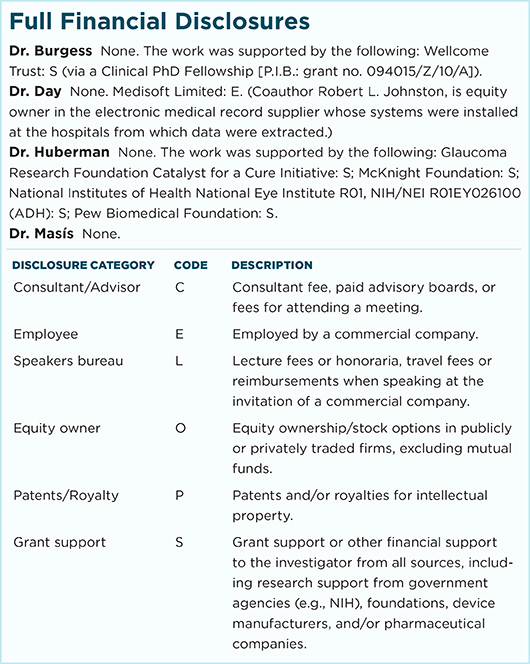Download PDF
Pseudophakic retinal detachment (RD) can occur with or without the surgical complication of posterior capsule rupture (PCR). But PCR during cataract surgery significantly alters both the risk and the time course of RD, according to a report from the United Kingdom National Ophthalmology Database Study of Cataract Surgery.1 The study included data on 61,907 cataract surgeries (46,824 patients) performed from 2006 to 2010.
Shedding light on risk and timing. PCR, which occurred in 1,100 of those surgeries, substantially raises the risk of RD. During the 4-year study period, the RD rate was 0.16% for eyes without PCR and 3.27% for those with PCR.
Another striking difference is in the time course. Overall, RD risk increased linearly over the 4-year study. In contrast, however, “Over half of the retinal detachments following cataract surgery complicated by posterior capsule rupture occurred within 2 months,” said lead author Alexander C. Day, PhD, FRCOphth, at Moorfields Eye Hospital. The median time to RD surgery was 44 days for eyes with PCR and 6.3 months for eyes without PCR.
Effect of the surgeon. Surgical experience was an independent risk factor for PCR. “Trainee surgeons are more likely to have surgical complications such as PCR,” Dr. Day said. Further, in surgeries performed by trainees, there was a tendency for RD to occur earlier in eyes with or without PCR.
It’s possible, said Dr. Day, that junior surgeons lack the skills possessed by senior surgeons in “tidying up” after PCR and ensuring that no strands of vitreous remain in the corneal wound or around the IOL. Vitreous remnants could increase the risk of tractional retinal tears during posterior vitreous detachment (PVD), which is the main causative event for retinal tears and subsequent retinal detachments.
Recommendations. Given the high risk of retinal detachment following cataract surgery with PCR, the authors recommend close follow-up with dilated funduscopy in the first 2 months after surgery. They also urge surgeons to explain the nature of retinal detachment and PVD symptoms to patients who experienced PCR. “They should be advised to contact their ophthalmologist promptly if they notice any new floaters, flashing lights, or shadows in their vision,” said Dr. Day.
—Miriam Karmel
___________________________
1 Day AC et al. Ophthalmology. Published online June 21, 2016.
___________________________
Relevant financial disclosures—Dr. Day: None.
For full disclosures and disclosure key, see below.

More from this month’s News in Review